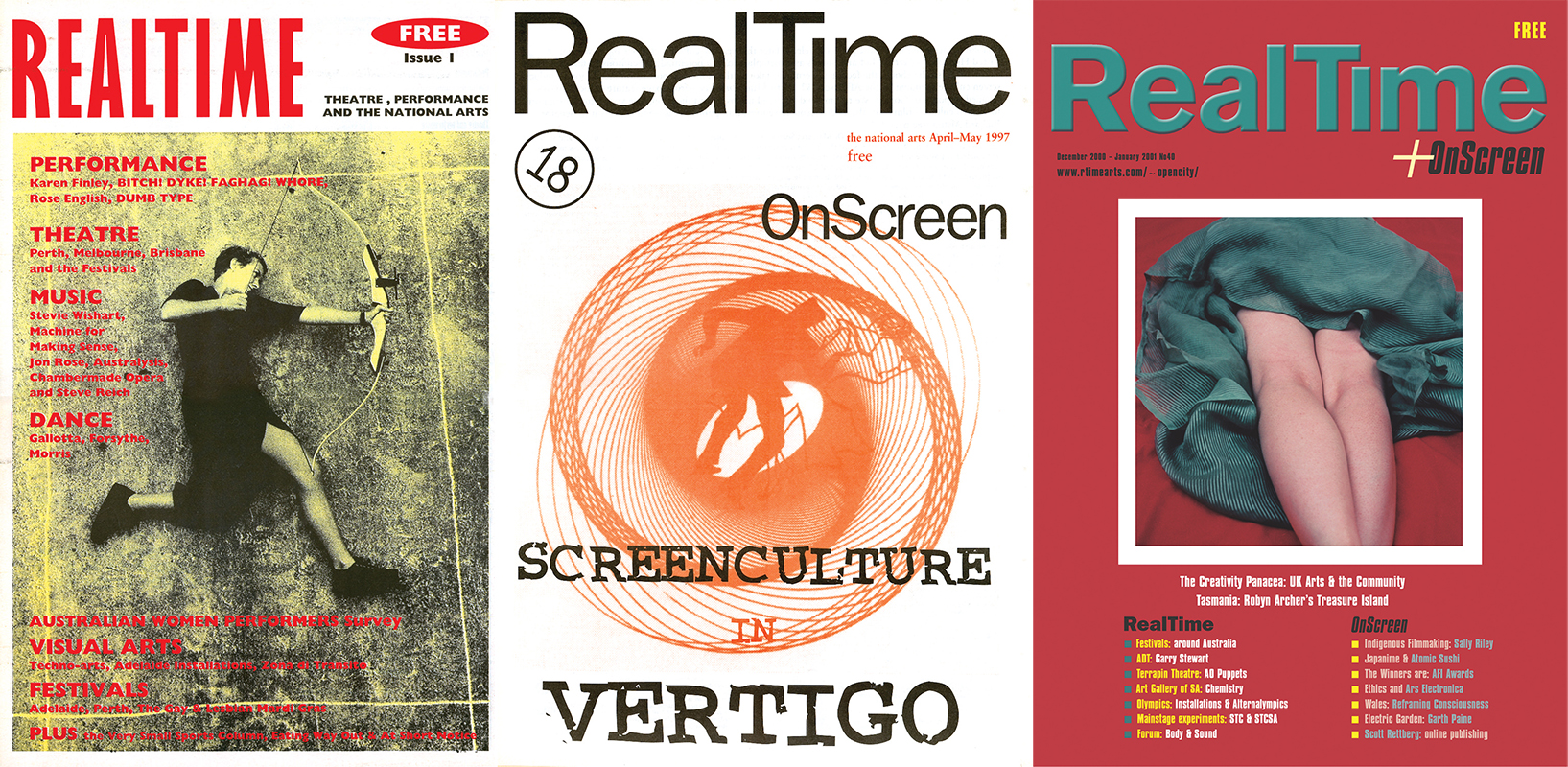
RealTime 1994-2000 online for the first time
We’ve scanned the 40 print editions of RealTime’s first six years, making available online a fascinating record of a period of wildly intensive creativity, new and fervent preoccupations, humour and angry arts politics. And lots of great writing.
This is a brief introduction to those editions. You can turn to them when reading Virginia Baxter’s Making art in heavy weather: Indigenous performance 1994-2000 and Katerina Sakkas’ Highly charged connections: Visual arts 1994-2004. In each, editions and page numbers are clearly indicated. Look out for coming instalments of our archive overview series, including one on the art politics of the 1990s.
The PDFs of editions 1-40 (1994-2000) are each searchable and, significantly, preserve the look of the magazine. For a long time, we were limited to one-spot colour throughout, black and white photographs and ink that imprinted itself on readers’ hands. A plan to provide a pair of white gloves with each copy never came to fruition. You can read an account of the early years of RealTime that we penned for our 10th birthday, describing how we worked and detailing the staff and contributing editors so significant to RealTime’s growing reach in this period.
In some ways the early RealTime was quite different from the magazine of 2001-2017. Art in the period 1994-2000 was very fluid with cross-artform practices that had evolved in the 1980s becoming more prevalent. This was one of the principal reasons we established the magazine, to draw public attention to innovative emerging and established artists, although our second edition revealed tensions between older performance artists and younger contemporary performance makers at the Ivan Dougherty Gallery and The Performance Space’s 25 Years of Performance Art (RT2, p9-11) held in May 1994.
In the spirit of the times RealTime content wasn’t initially divided into artform sections though we gradually succumbed under pressure from advertisers in particular, but without ever surrendering our focus on the interplay between practitioners and forms. In 1996 we formally brought film and media arts into the fold with our 12-page OnScreen supplement, though we had covered these regularly from our very first edition.
As well as previews and reviews there were epic editorials about contentious issues, copious listings and brief film, CD and book reviews. And there was humour from novelist Bernard Cohen and our back pages sports columns: Tee Off with the mysterious Vivienne Inch who viewed the world of arts politics through the eyes of a keen (alleged) golfer, and Tooth & Claw with Jack Rufus (a team of two arts scholars incisively applying art principles to football, soccer and cricket). We’ll soon run a selection of the best of Cohen, Tee Off and Tooth & Claw.
We hope you’ll enjoy browsing editions 1-40 whether you read them at the time or they’re a new experience of an era that seems to us now at RealTime even more diverse and spirited than we remembered.






